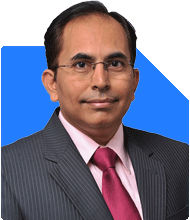What is best mutual fund to invest now
Ans: Selecting the best mutual fund depends on your financial goals, risk appetite, and investment horizon. It’s essential to focus on diversification, consistency, and professional management. Let’s evaluate the factors and categories you should consider for investment:
Factors to Consider Before Investing
1. Financial Goals
Define whether your goal is short-term, medium-term, or long-term.
For long-term goals like retirement, focus on equity-oriented funds.
For short-term needs, prioritise debt or hybrid funds.
2. Risk Tolerance
Assess your risk-taking capacity.
For high risk tolerance, small-cap and mid-cap funds can be considered.
For moderate risk tolerance, opt for large-cap or balanced advantage funds.
3. Investment Horizon
Equity funds perform best over a 5–10 year horizon.
For horizons under three years, choose safer options like debt mutual funds.
4. Tax Efficiency
Equity mutual funds are taxed at 12.5% on LTCG above Rs 1.25 lakh.
Debt mutual funds are taxed as per your income slab.
Choose funds aligned with your tax strategy.
Categories of Mutual Funds Based on Goals
1. Large-Cap Funds
Invest in established companies with stable performance.
Suitable for moderate risk-takers.
Provides consistency during market volatility.
2. Mid-Cap and Small-Cap Funds
Focus on medium and smaller companies with higher growth potential.
Suitable for investors with high risk appetite and long-term goals.
Volatility is higher compared to large-cap funds.
3. Multi-Cap and Flexi-Cap Funds
Invest across large-cap, mid-cap, and small-cap stocks.
Offers diversification and balanced risk.
Suitable for long-term goals with moderate risk tolerance.
4. Hybrid and Balanced Advantage Funds
A mix of equity and debt for stable growth.
Suitable for investors seeking moderate returns with lower risk.
Ideal for medium-term goals.
5. Debt Mutual Funds
Invest in government securities, corporate bonds, and money market instruments.
Suitable for short-term goals or conservative investors.
Provides steady but low returns.
Actively Managed Funds vs Index Funds
Disadvantages of Index Funds:
Index funds aim to match the market but lack active management.
They underperform during market corrections as they are entirely market-dependent.
Index funds do not focus on risk management, unlike actively managed funds.
Benefits of Actively Managed Funds:
These funds outperform during both rising and falling markets.
Professional fund managers allocate assets based on market conditions.
Actively managed funds can deliver superior long-term returns compared to index funds.
Avoid Direct Plans: Invest Through a Certified Financial Planner
Disadvantages of Direct Plans:
Direct plans require constant monitoring, which is time-consuming.
Without guidance, there is a risk of under-diversification or over-concentration.
Direct plans often lead to poor fund selection due to limited expertise.
Benefits of Regular Plans:
Investing through a Certified Financial Planner ensures personalised advice.
CFPs monitor your portfolio and recommend adjustments.
You gain access to a diversified and goal-oriented portfolio.
Suggested Allocation Based on Goals
Short-Term Goals (0–3 Years):
Invest in ultra-short-term debt funds or liquid mutual funds.
Prioritise stability and liquidity.
Medium-Term Goals (3–5 Years):
Consider hybrid or balanced advantage funds.
These provide a mix of stability and moderate growth.
Long-Term Goals (5+ Years):
Focus on equity-oriented funds like large-cap, mid-cap, and multi-cap funds.
These funds harness the power of compounding over time.
Tax Efficiency for Your Investments
Equity Mutual Funds: Keep investments for more than one year to avoid 20% STCG.
Debt Mutual Funds: Withdraw strategically to avoid high tax liability, as per your slab rate.
Balanced Advantage Funds: These funds are more tax-efficient than pure debt funds.
Key Recommendations
Choose funds based on your financial goals, risk appetite, and investment horizon.
Maintain a diversified portfolio across equity, debt, and hybrid categories.
Consult a Certified Financial Planner to customise your investment strategy.
Avoid index funds and direct plans. Stick to actively managed funds with regular plans.
Review your portfolio every six months for realignment.
Final Insights
Your decision to invest in mutual funds is a step toward financial independence. Select funds aligned with your goals, and rely on expert guidance for better results. Stay patient and disciplined to achieve your financial objectives.
Best Regards,
K. Ramalingam, MBA, CFP,
Chief Financial Planner,
www.holisticinvestment.in
https://www.youtube.com/@HolisticInvestment




























